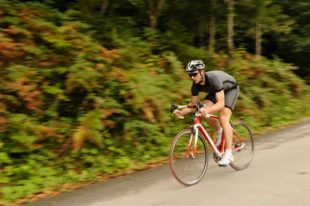Action and endurance sports are demanding… we all know that. As the competition heats up in pretty much every sport, you need to find advantages. One of those advantages is being aerobically (cardio) fit. I constantly get told at the track, “I can only do cardio once or twice week, so I don’t really bother because it’s not going to do anything.” This couldn’t be farther from the truth, and my response is always, “one cardio session is better than none, and two is better than one.” Even the odd cardio session will improve your ability to compete in your sport. There are a number of adaptations that happen in your body when you do Cardio, and I have focused on 13 of them that will make you a better athlete, so get over the pile of excuses and get on the bike or put your running shoes on and hit the pavement… even for 15 or 20 minutes at a time.
Adaptations to Cardiovascular Training
- Increase in the number and size of the mitochondria in your muscle cells. Mitochondria are essential the engines and furnace that produces energy that then becomes usable by your cells. You need more and bigger mitochondria to improve your performance.
- Increase in capillarization. When you train to be aerobically fit, your body produces more capillaries to allow blood to flow in your extremities. This is a good thing to deliver nutrients to your hard-working muscles and remove toxins during activity.
- Increase in left ventricular mass. Your left ventricle on your heart is the area that pushes blood out of your heart to your working muscles. When this increases in mass it is stronger and can contract more forcefully, pushing more blood with every beat.
- Decrease in end diastolic volume. Because the left ventricle can contract with more force, it leaves less blood after each contraction. With more blood being circulated with every beat of your heart, your heart rate drops which conserves energy and makes you more efficient.
- Decrease in total peripheral resistance. This is a fancy term that means your blood will flow easier throughout your body. The further away you are from your heart, the smaller the blood vessels get. This creates more resistance for you blood. By decreasing this resistance, you once again put less stress on your heart. This adaptation is particularly relevant for reducing arm pump.
- Lower resting heart rate. Because your heart is becoming stronger and more efficient with every beat, your heart doesn’t have to beat as often at rest. This lowers the overall stress on your body.
- Increase in Hemoglobin and Myoglobin. Hemoglobin is the part of red blood cells that oxygen attaches to in the lungs. This oxygenated blood then gets delivered to your working muscles. At that point it is exchanged for carbon dioxide which is brought back to your lungs to breath out. Myoglobin is the oxygen carrier with your muscles and consequently hemoglobin and myoglobin work together to deliver oxygen.
- Increase in oxidative enzyme concentration. An increase in oxidative enzymes helps your mitochondria be more efficient at creating adenosine tri-phosphate (ATP) which your body ultimately uses for fuel. The more ATP you produce, the more energy you can use.
- Alteration of fiber type. Your body is made up of 3 types of muscle fibers; 1) Slow Twitch, 2) Fast Oxidative Glycolytic and 3) Fast Glycolytic. Slow twitch is the primary aerobic muscle fiber and high levels of aerobic training between 60 and 65% of your maximum heart rate can actually convert Fast Oxidative Glycolytic fibers to Slow Twitch fibers allowing you to train/ride/race longer and more efficiently.
- Decrease in muscle mass. This may not be ideal for every athlete, but for some it is an advantage. getting your weight down can make you more efficient at going longer at a higher intensity. To combat a loss in muscle mass you can supplement protein in you diet.
- Psychological well-being. There’s nothing like getting high from cardio! When you exercise your body releases a number of hormones and endorphins that give you a natural high. Epinephrine (adrenaline) is a key hormone and neurotransmitter that gives you focus and perceived energy. Other opiate related transmitters called Beta-endorphins are releases from your pituitary gland and contribute to that calm, focused feeling.
- More regular sleeping patters. We all know that sleeping well means better training and racing. When you are aerobically fit, you sleep better, which in turn releases hormones like Growth Hormone that repairs your body during rest.
- Decrease risk of heart disease. If you want to be doing action sports for a long time, or are 30 or over, you’d better incorporate cardio. It’s the magic prescription for long-term enjoyment and performance.
Well, that’s a wrap for now. This is an overview of what happens when you put aerobic training (cardio) into your routine. Remember, we’re all busy, but any cardio is better than none and it WILL improve your performance, safety and enjoyment of your chosen Action Sport.
